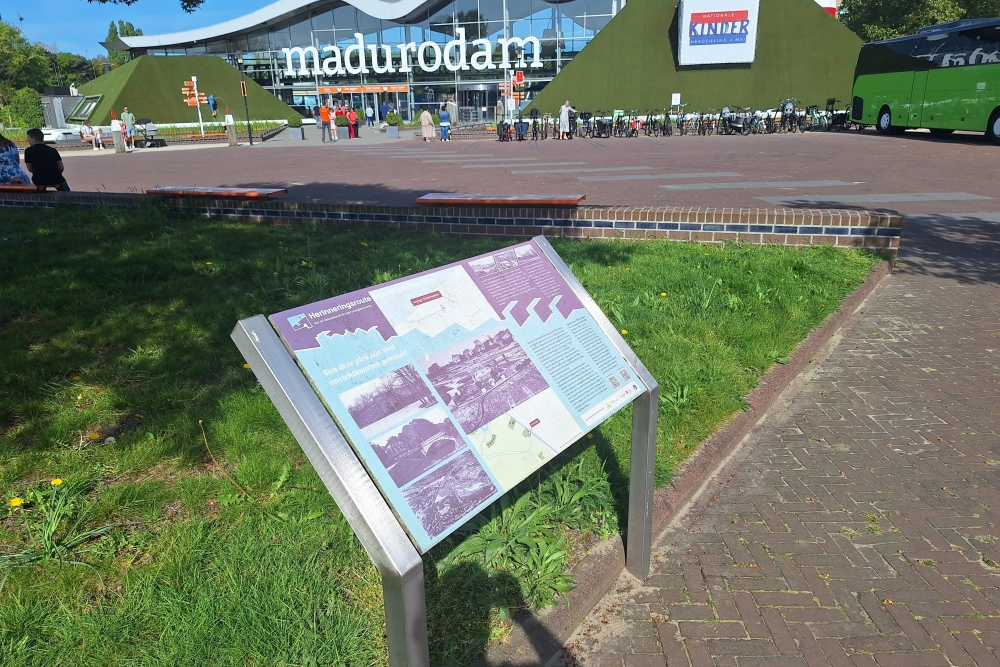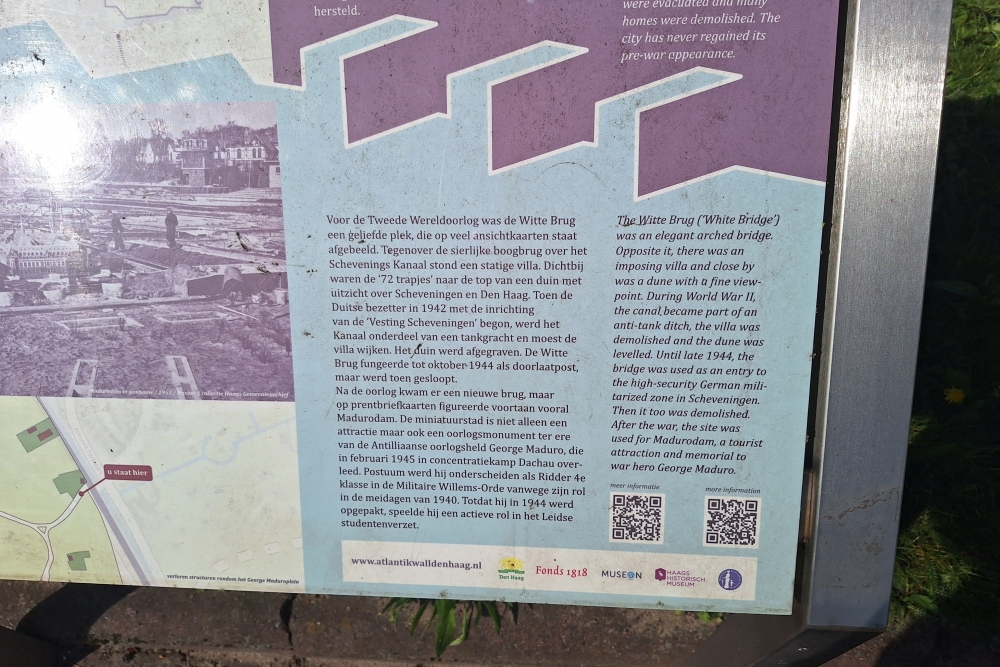Remembrance Route Atlantic Wall The Hague
During WWII, The Hague became part of the Atlantic Wall. As a result, a large part of the city was transformed into a military fortress. Approximately 130,000 residents of The Hague and Scheveningen were forced to leave their homes and neighborhoods. Entire streets, hospitals, bridges and parks were subsequently demolished. In their place came a continuous series of barriers and bunkers, manned and guarded by soldiers. After the war, it took years for the damage to be repaired.
What you can expect from the memorial route:
- The life story of George Maduro: You will learn about his courageous role in the Second World War, his resistance work and his death in the Dachau concentration camp.
- Establishment of Madurodam: The route shows how Madurodam was established in 1952 as a living memory and fundraising project for young people's charities.
- Memorial site: There is room for reflection at the statue of George Maduro, which stands in the park. This is an official war memorial and is used annually during commemorations.
- Educational and interactive: The route is designed with texts, photos and sometimes digital applications that tell the story in an accessible way.
The memorial route is part of Madurodam's broader mission: making young and old aware of freedom, responsibility and solidarity.
Discover on foot or by bike how the Atlantic Wall has permanently changed The Hague.
Do you have more information about this location? Inform us!
Source
- Text: Herinneringsroute Atlantikwall Den Haag
- Photos: RJ Army
Nearby
Museum
- Madurodam Den Haag - Den Haag
- Atlantikwall Museum / German Command Bunker 622 Scheveningen - Den Haag
- National Monument Oranjehotel (Orange hotel) - Scheveningen (Den Haag)
Point of interest
- Beau Séjour Madurodam - Den Haag
- Former V-2 Launch Site - Den Haag
- V-2 Impact Site Dune Area V.Voorschotenlaan - Den Haag
Monument
- Statue of George Maduro - Den Haag
- Memorial George Maduro in Madurodam - Den Haag
- Memorial Bep Boon-van der Starp Madurodam - Den Haag
Cemetery
- Commonwealth War Graves The Hague - Den Haag
- Dutch War Graves Den Haag - Den Haag
- Communal Cemetery Kerkhoflaan - Den Haag
Remembrance Stone
- Stumbling Stone Prinsevinkpark 24 - Den Haag
- Stumbling Stones Van Voorschotenlaan 20 - Den Haag
- Stumbling Stone Burnierstraat 3 - Den Haag
Fortification
- Atlantikwall - Regelbau 645 - Den Haag
- Bunker House La Défense FL 246 Scheveningen - Den Haag
- German Artillery Bunker 625 Scheveningen - Den Haag







